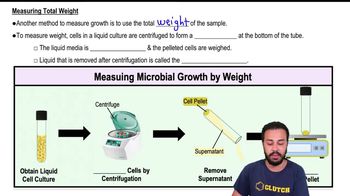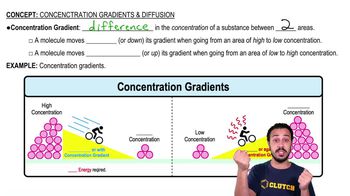Label the following fatty acids as saturated, monounsaturated, or polyunsaturated. <IMAGE>
Determine the following:
a. The molarity of a solution with 0.5 moles of glucose per liter of water.
b. The concentration (in weight/volume percent) of a solution that contains 20 grams of sodium chloride per liter of water.
c. The concentration (in mg/dL) of a solution with 1 gram of lactic acid per 100 mL of
solution.
d. The molarity of a solution with 1 mmol of solute in 1 L of water.
 Verified step by step guidance
Verified step by step guidance
Verified Solution
Key Concepts
Molarity
Weight/Volume Percent

Concentration in mg/dL

What ions result when hydrogen donates one electron to fluorine?
Select all of the compounds from the following list. If it is not a compound, then state
what it is.
a. H2O
b. HCO3
c. 02
d. H2
e. Li2+
f. C6H12O6
g. H+
Select the false statement about salts. (NCLEX/HESI/TEAS)
a. Salts are ionic compounds.
b. Salts are formed when an acid and a base react with each other.
c. Salts consist of an anion and a cation component.
d. Salts may be inorganic.
e. Salts are usually acids.
f. Salts are usually hydrophilic.
Write the molecular formula for a substance that contains two oxygen molecules, two carbons, and four hydrogen atoms. Be sure to follow the standard conventions of writing molecular formulas.
Indicate the true statements and then correct the false statements so that they are true.
a. Isotopes are atoms with differing numbers of protons and the same number of
neutrons.
b. A cation is a positive ion.
c. Redox reactions create ions.
d. Equal sharing of electrons leads to polar covalent bonds.
e. Ions are charged atoms.
f. CO2 is an inorganic molecule.
g. Isomers have the same molecular formula but different structures.
h. Adding a base to a solution will decrease the pH.
